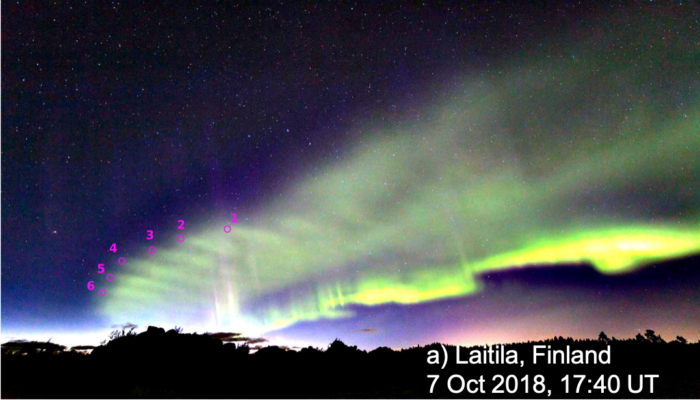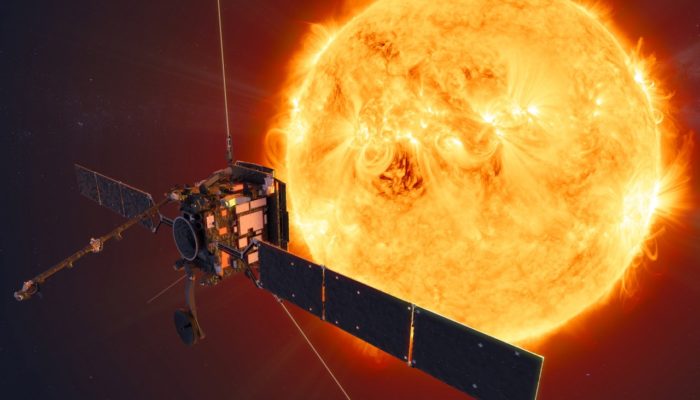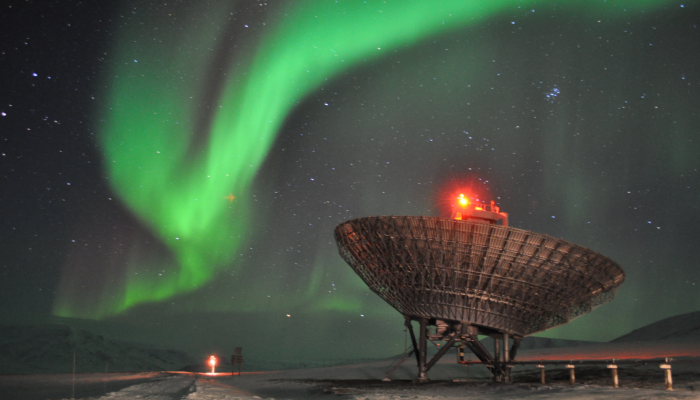The EGU Solar–Terrestrial physics (ST) division’s early-career scientist (ECS) team is organising a so-called Campfire event to gather the community together before EGU22 and promote networking among ST-ECSs. The event will be held on Zoom and will take place on Friday 18 March 2022 at 15:00 CET, for a duration of one hour. We will make use of breakout rooms to facilitate discussions in smaller gr ...[Read More]
First year of Energetic Particle Measurements with EPD aboard Solar Orbiter
One year ago, the Energetic Particle Detector (EPD) aboard the European Space Agency’s (ESA’s) Sun observing spacecraft Solar Orbiter (SolO) was launched starting a long-awaited journey. SolO (Figure 1) will provide both in-situ and remote sensing measurements in the inner Heliosphere and EPD will contribute particularly to the latter ones. EPD consists of four sensors that share the s ...[Read More]
Meet the Experts: The future of solar terrestrial research
Every year at the EGU General Assembly renowned experts from the field of Solar-Terrestrial research get together to give inspirational talks and to meet with early career scientists. This year’s “Meet the Experts” session is focusing on the future of solar terrestrial research. To think of the future, we first have a look at the past, and more precisely on the knowledge acquired with over half a ...[Read More]
So… Who Cares about Switchbacks?
Explaining the Mysterious Plethora of Short Magnetic Field Reversals Observed by Parker Solar Probe and their Relation to the Origin of Solar Wind. In Switchbacks Explained: Super-Parker Fields – the Other Side of the Sub-Parker Spiral, N. A. Schwadron and D. J. McComas provide a simple geometric explanation for the source of “switchbacks” and associated large and one-sided transverse flows in the ...[Read More]
Tips on engaging outside of your echo chamber
In my previous blog, I highlighted that public engagement needs to go beyond traditional approaches such as lectures, since these tend to only attract audiences who are already highly interested in science. However, our science is relevant to (and funded by) everyone, so we have a duty to engage beyond simply this “scientific echo chamber”. But how do you even approach attempting this? It seems li ...[Read More]
Filmmakers get creative with the sounds of satellite data
One of the major motivations behind research into solar-terrestrial physics is the potential consequences of space weather on our technologically dependent society. Given this risk, recognised by many governments around the world, it is a little concerning that a sizable fraction of the public have never even heard of the term “space weather” – for example a recent public dialogue in the UK showed ...[Read More]
New auroral dunes discovered through citizen science

The region of the Earth’s atmosphere lying at altitudes between about 80 and 120 km, corresponding to the mesosphere–lower thermosphere–ionosphere (MLTI), is often referred to as the “ignorosphere”, because its observation is so challenging that only a handful of measurements of its composition, temperature and other physical parameters have been obtained over the last few decades. It is, however, ...[Read More]
Chasing solar storms as an early career scientist
Hello! My name is Erika Palmerio and I am a newly qualified Dr in space physics from the University of Helsinki, Finland. In this blog post I will talk about my PhD research and my future career plans. The title of my PhD dissertation is “Magnetic structure and geoeffectiveness of coronal mass ejections”. Coronal mass ejections (or CMEs) are huge and spectacular clouds of magnetic field and plasma ...[Read More]
New insights to the north-south asymmetries of auroral features
Recent research on the simultaneous displays of aurora in both hemispheres have lead to new knowledge of how large-scale asymmetries in the global magnetic field configuration can arise and be mitigated. This new understanding is contrary to what has been the consensus in the field, and was recently highlighted in a press release from the American Geophysical Union, followed by attention from nume ...[Read More]
Web-based Tools for Forecasting Solar Particle Events and Flares
The presence of Solar Energetic Particles (SEPs) poses a serious health risk to humans in space, can result in increased radiation doses for high-latitude aircraft flights and constitutes a serious hazard for the micro-electronics and other hardware elements of satellites, aircraft and launchers. These groups of end users need reliable forecasts of possible enhancements in the radiation flux level ...[Read More]





